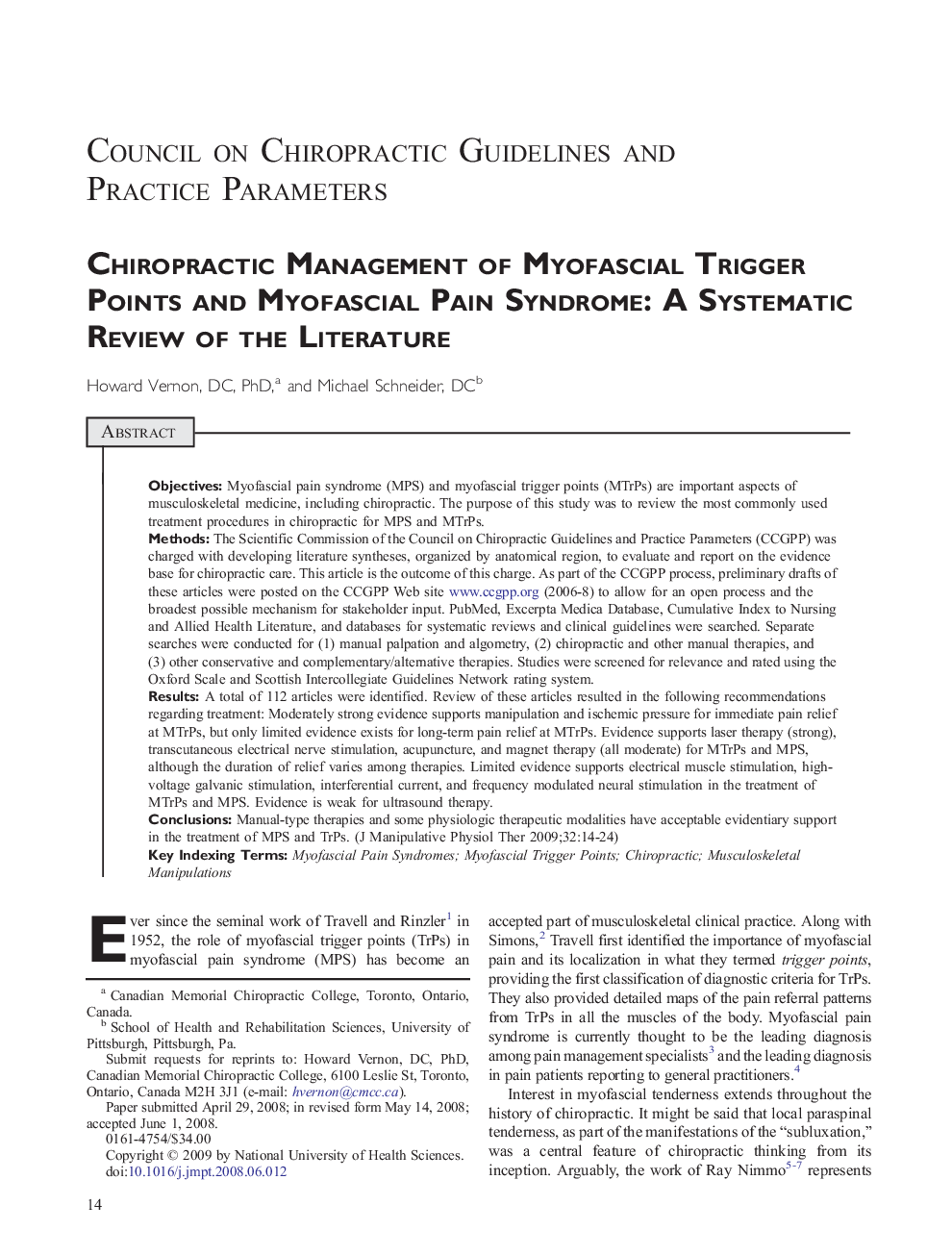| Article ID | Journal | Published Year | Pages | File Type |
|---|---|---|---|---|
| 2620944 | Journal of Manipulative and Physiological Therapeutics | 2009 | 11 Pages |
ObjectivesMyofascial pain syndrome (MPS) and myofascial trigger points (MTrPs) are important aspects of musculoskeletal medicine, including chiropractic. The purpose of this study was to review the most commonly used treatment procedures in chiropractic for MPS and MTrPs.MethodsThe Scientific Commission of the Council on Chiropractic Guidelines and Practice Parameters (CCGPP) was charged with developing literature syntheses, organized by anatomical region, to evaluate and report on the evidence base for chiropractic care. This article is the outcome of this charge. As part of the CCGPP process, preliminary drafts of these articles were posted on the CCGPP Web site www.ccgpp.org (2006-8) to allow for an open process and the broadest possible mechanism for stakeholder input. PubMed, Excerpta Medica Database, Cumulative Index to Nursing and Allied Health Literature, and databases for systematic reviews and clinical guidelines were searched. Separate searches were conducted for (1) manual palpation and algometry, (2) chiropractic and other manual therapies, and (3) other conservative and complementary/alternative therapies. Studies were screened for relevance and rated using the Oxford Scale and Scottish Intercollegiate Guidelines Network rating system.ResultsA total of 112 articles were identified. Review of these articles resulted in the following recommendations regarding treatment: Moderately strong evidence supports manipulation and ischemic pressure for immediate pain relief at MTrPs, but only limited evidence exists for long-term pain relief at MTrPs. Evidence supports laser therapy (strong), transcutaneous electrical nerve stimulation, acupuncture, and magnet therapy (all moderate) for MTrPs and MPS, although the duration of relief varies among therapies. Limited evidence supports electrical muscle stimulation, high-voltage galvanic stimulation, interferential current, and frequency modulated neural stimulation in the treatment of MTrPs and MPS. Evidence is weak for ultrasound therapy.ConclusionsManual-type therapies and some physiologic therapeutic modalities have acceptable evidentiary support in the treatment of MPS and TrPs.
